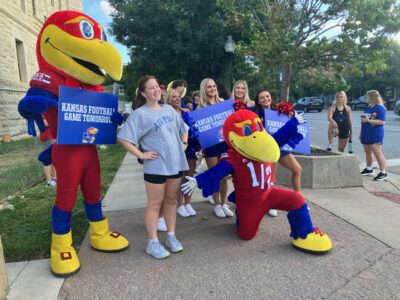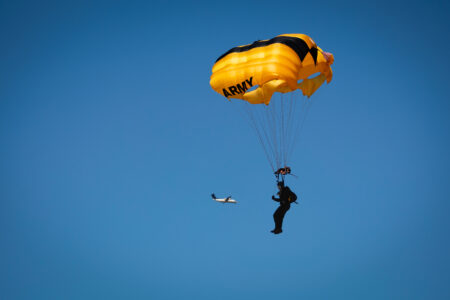KU’s post-House plan includes 25 new athletic scholarships, primarily in women’s sports

photo by: Kansas Athletics
KU athletic director Travis Goff speaks at volleyball coach Matt Ulmer's introductory press conference on Tuesday, Jan. 21, 2025, at Horejsi Family Volleyball Arena.
Frisco, Texas — The announcement of Kansas baseball coach Dan Fitzgerald’s amended six-year contract in June provided some insight into KU’s future plans in the wake of the House v. NCAA settlement by suggesting that the baseball program would receive “an increase in scholarships.”
The House settlement, which became effective on July 1, replaced previous scholarship limits with newly devised roster limits under which any number of players can be on scholarship.
In some sports, that allows for the possibility of a dramatic increase in investment. For example, college baseball teams can now furnish scholarships to as many as 34 players on their rosters, compared to the previous limit of 11.7.
“That’s been one of the lowest-scholarshiped programs in college athletics,” KU athletic director Travis Goff said. “And so we really see that one as an opportunity to move the needle.”
Indeed, at Big 12 media days on Wednesday, Goff explained further details of in which sports KU plans to boost its athletic scholarship totals.
In all, the department is adding about 25 new scholarships. As Goff put it, KU is “beholden and committed” as a result of Title IX to factoring in its on-campus gender ratio with its athletic scholarship offerings. While KU’s population is currently about 53% female and 47% male and trending toward 55-45, Goff said, 70% of the new scholarships will go to women’s sports, including specifically soccer, softball, women’s track and field, and volleyball. Meanwhile, baseball will be one of the main men’s sports benefiting from the remaining 30%.
Under the new rules, any money that KU spends on additional scholarships beyond its previous offerings will be deducted from the recently implemented cap of $20.5 million that the athletic department can pay its athletes across all sports. (The maximum dollar amount allowed for new scholarship offerings this year is $2.5 million, which KU won’t get close to by providing just 25 scholarships.)
At the same time, KU also plans to participate in revenue sharing for baseball and therefore find a balance between the two methods of bolstering its program.
“We’re not going haywire in any of those, but we think the combination creates a really competitive opportunity for baseball to be certainly relevant in this next chapter,” Goff said.
While baseball will be one of the main beneficiaries of additional scholarship investment, Fitzgerald previously said that it wasn’t necessarily a topic in his contract discussions specifically.
“There are things we’re doing this year, but it’s going to be different next year,” he said on July 2. “Our numbers do increase next year. I don’t think any of us know what this is going to look like three years from now.”







